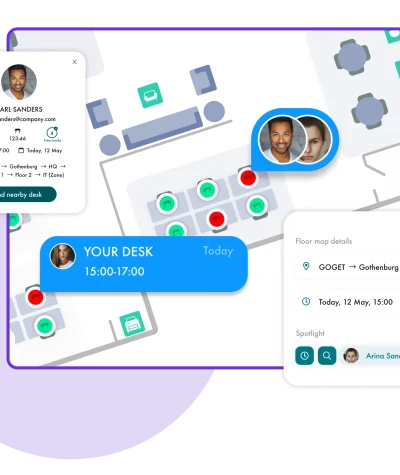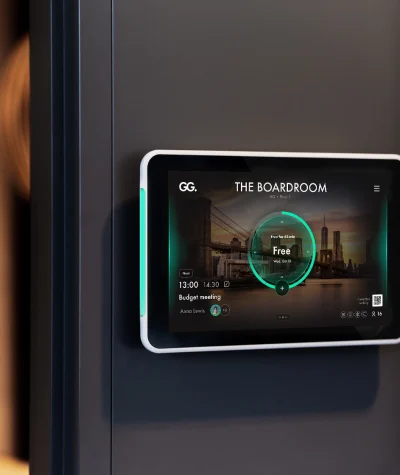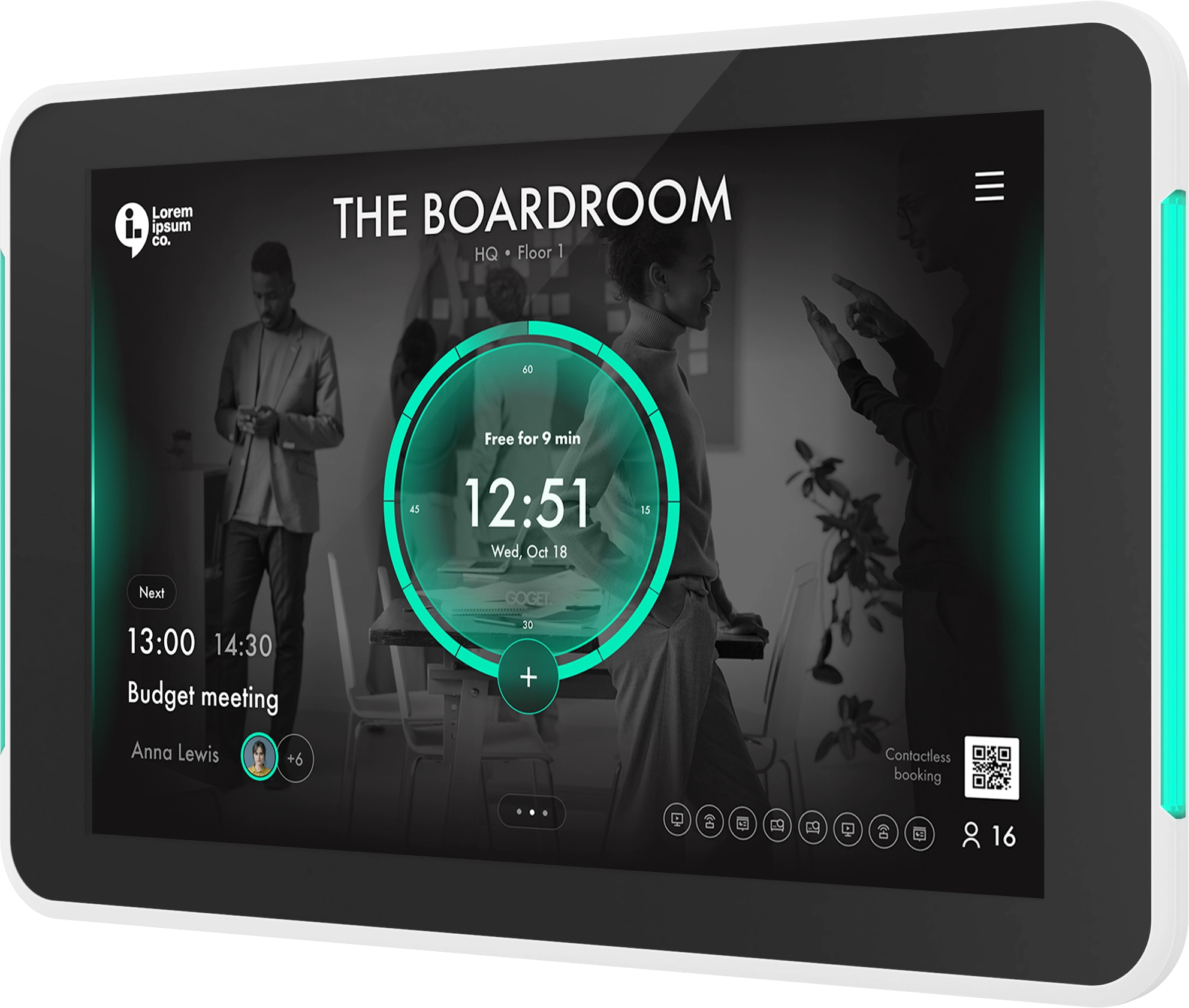The driving forces behind the shift to hybrid work models
The shift to more flexible work arrangements is driven by several key factors: work-life balance, technological advancements, demographic changes, globalization, and considerations of sustainability and cost efficiency.
Work-Life Balance:
Employees increasingly seek a better balance between their professional and personal lives. Flexible work models, such as desk booking and hot desking, empower them to tailor their schedules and workspaces, fostering a healthier, more balanced lifestyle.
Advancements in Technology:
The widespread adoption of digital tools and collaboration platforms has made remote work more feasible and accessible than ever before. Employees can now connect and collaborate seamlessly from anywhere, enabling companies to embrace flexible work arrangements without sacrificing productivity or communication.
Changing Demographics:
With millennials and Gen Z comprising a significant portion of the workforce, there is a growing preference for flexibility and autonomy in how work is structured and performed. These generations value experiences, flexibility, and meaningful work over traditional notions of stability and routine, driving the demand for flexible work arrangements.
Globalization and Remote Work:
The rise of globalization has led to an increasingly interconnected and distributed workforce. Remote work has become not only feasible but also necessary for many companies to attract and retain top talent, regardless of geographical location. Hybrid work arrangements enable companies to tap into a global talent pool and adapt to diverse work styles and preferences.
Cost Efficiency and Sustainability:
Flexible work arrangements can also offer cost-saving benefits for companies by reducing overhead expenses associated with maintaining large office spaces. Moreover, embracing remote work and flexible work arrangements can contribute to sustainability efforts by minimizing commuting-related carbon emissions and reducing the overall environmental footprint of the organization.
Now that we’ve delved into the driving forces behind the shift to flexible work arrangements, it’s time to explore two popular strategies: desk booking and hot desking. We’ll dissect the nuances of each approach, weighing their respective pros and cons. By understanding these distinctions, you’ll be better equipped to determine which strategy aligns best with your organization’s needs and culture.
Desk Booking & Hot Desking Defined
Desk booking:
This model involves reserving a specific desk or workspace for a designated period. It is ideal for teams that require specific tools or equipment at their desks.
Hot desking:
This strategy lets people choose from available desks on a first-come, first-served basis, which fosters flexibility and encourages collaboration among team members.
To help you decide which strategy best suits your needs, here is our summary of the pros and cons of each approach.
Pros of Desk Booking:
- Space Optimization:
Desk booking maximizes office space utilization by ensuring desks are used efficiently on a reservation basis, reducing wasted space, and minimizing the need for excess real estate. - Cost Savings:
Efficient space utilization translates directly into cost savings for companies. By reducing their office footprint, organizations can save on rent, utilities, maintenance, and other overhead expenses associated with maintaining a larger physical workspace. In addition, reducing excess real estate also promotes a more sustainable workplace by lowering energy consumption and minimizing environmental impact. - Employee Satisfaction:
Desk booking gives employees greater autonomy and control over their work environment, leading to increased satisfaction and morale. The flexibility enabled by desk management systems can enhance engagement and productivity. - Collaboration Facilitation:
Desk booking systems improve collaboration by allowing teams to easily book adjacent desks or meeting spaces. This promotes spontaneous interactions, idea sharing, and teamwork, fostering a more dynamic and creative work environment.
Cons of Desk Booking:
- Administrative Burden:
Without an effective desk booking system it can be an administrative burden to handle desk bookings and ensure fair allocation of workspace. This may require dedicated resources and robust systems to handle reservations, cancellations, and changes efficiently. - Dependency on Technology:
Desk booking relies heavily on technology, such as reservation software. Technical glitches or system downtime can disrupt the desk booking process and impact employee productivity and satisfaction. - Resistance to Change:
Introducing desk booking systems may encounter resistance from employees accustomed to traditional fixed desk arrangements. Some employees may prefer the stability and predictability of assigned desks and resist the transition to a more flexible workspace model.
Pros of Hot desking:
- Flexibility:
Hot desking offers employees the flexibility to choose their workspace based on their needs for the day. Whether they require a quiet area for focused work or a collaborative space for team meetings, this hybrid work model empowers employees to select the environment that best suits their tasks and preferences. - A more dynamic work environment:
When done right, hot desking will result in constant variation of where people sit and who they sit next to. This results in more spontaneous interactions and a more dynamic work environment.
Cons of Hot desking:
- Potential for Overcrowding:
Popular or high-demand areas may become overcrowded, leading to competition for available desks. This can create frustration and discomfort for employees, particularly during peak hours or busy periods. - Lack of Consistency:
Hot desking may result in a lack of consistency in workspace availability. Employees may find it challenging to secure their preferred desks or workspaces, leading to uncertainty and disruption to their daily routines. - Higher demands on employees and management:
Hot desking demands effective communication and management to ensure availability and fairness.
Understanding the advantages and disadvantages of each strategy is the first step in deciding if hot desking or desk booking is the best strategy for your organization. In the next section, we will explore a few more aspects to consider when developing your flexible workspace strategy.
How to find the right fit for your organization
The choice between desk booking and hot desking is not a one-size-fits-all decision. On the contrary, it requires a deep understanding of the unique needs, preferences, and goals of your organization. Here we give you the tools to find the right fit for your organization and make sure that your flexible work strategy is a success:
Conduct surveys and gather input from employees
Start by gathering feedback from employees to understand their needs, preferences, and concerns regarding workspace arrangements. Surveys, focus groups, or one-on-one discussions can provide valuable insights into how employees work best and what they value in their work environment.
Consider the nature of the work and its requirements
Assess the specific requirements of different roles within your organization. Some tasks benefit from a quiet, focused environment, while others may require frequent collaboration and interaction. Tailor your workspace design to accommodate these diverse needs and workflows.
Evaluate the physical workspace and available resources
Take stock of your current office layout, furniture, and technology infrastructure. Consider how well these resources support different work styles and whether any modifications or upgrades are needed to facilitate desk management effectively.
Flexibility and adaptability as guiding principles in workspace design
Design your workspace with flexibility and adaptability in mind. Create versatile work zones that can accommodate different activities and preferences, such as quiet zones for focused work, collaboration areas for team meetings, and communal spaces for social interaction.
Experiment with pilot programs or hybrid approaches
Implement pilot programs to test different workspace models on a smaller scale. This allows you to assess the feasibility and effectiveness of different hybrid work strategies within your organization before implementing them more broadly.
Evaluate the success and challenges of each model
Regularly evaluate the success and challenges of each workspace model based on key performance indicators, employee feedback, and utilization data. Most advanced desk management systems offer detailed statistics on how and when desks are used. Assess factors such as productivity, employee satisfaction, collaboration, and space utilization to determine which approach best aligns with your organization’s goals and culture.
Adapt your strategy based on feedback and evolving needs
Use the insights gathered from employee feedback and performance evaluations to make iterative adjustments to your workspace strategy. Be open to making changes and improvements based on evolving needs, technological advancements, and shifts in organizational priorities.
Maximize the benefits of your hybrid work strategy
By understanding the differences between desk booking and hot desking and considering their respective pros and cons, organizations can make informed decisions that align with their culture, objectives, and workforce dynamics.
It’s essential to recognize that there is no one definitive solution for every organization. Instead, the key lies in tailoring workspace solutions to match the specific goals and priorities of your organization. This may involve conducting thorough assessments of your organization’s needs, gathering input from employees, and experimenting with different approaches to find the right fit.
While both desk management strategies offer the potential for increased productivity, collaboration, and employee satisfaction, their effectiveness ultimately depends on how well they are implemented and integrated into the organizational culture. By fostering a culture of flexibility, adaptability, and open communication, organizations can maximize the benefits of these workspace models and create a work environment that empowers employees to thrive.
In the dynamic and ever-evolving landscape of modern work, it’s crucial for organizations to remain agile and responsive to changing needs and trends. By continuously evaluating and refining their workspace strategies, organizations can create environments that support innovation, creativity, and growth, ultimately driving success in the digital age.
Want to implement a desk management solution and boost your workspace utilization? Reach out to us at Goget to schedule a consultation.



